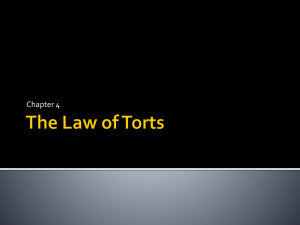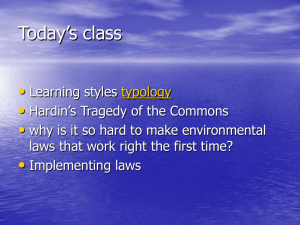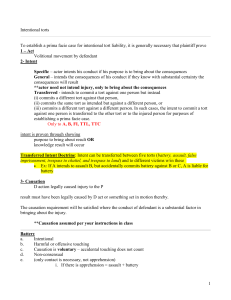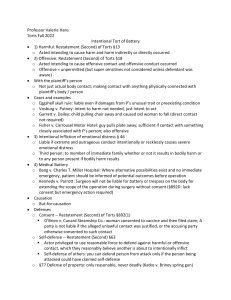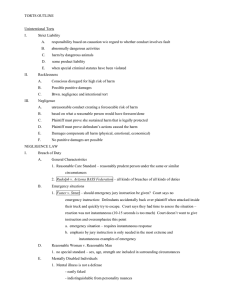Causation - Cause in Fact
advertisement
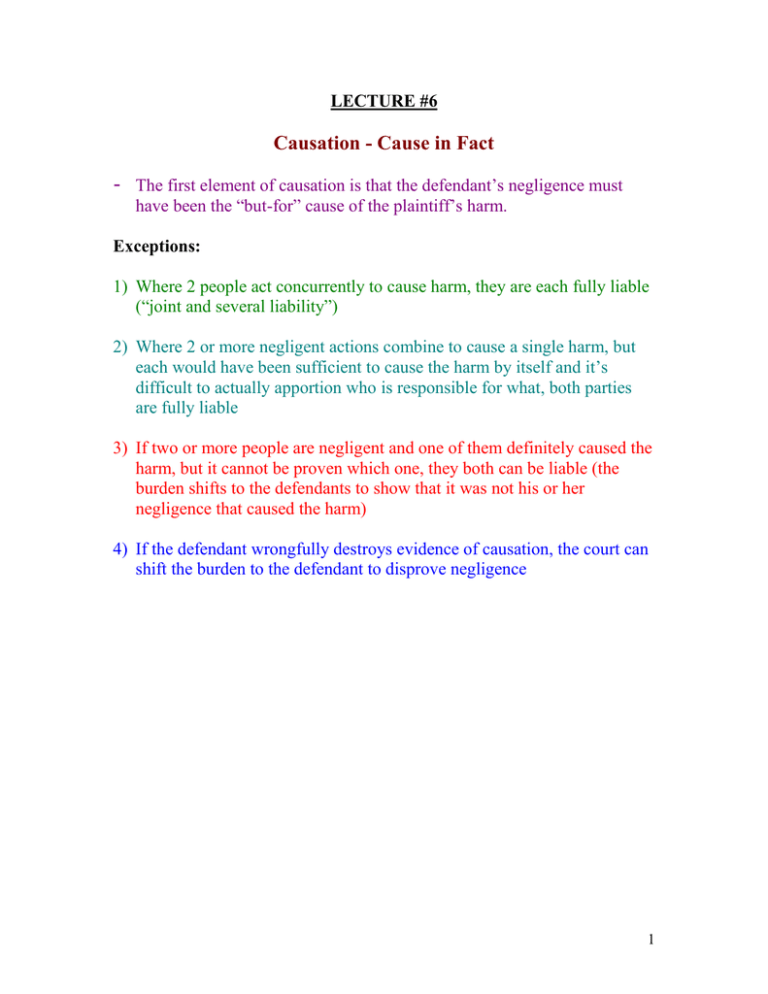
LECTURE #6 Causation - Cause in Fact - The first element of causation is that the defendant’s negligence must have been the “but-for” cause of the plaintiff’s harm. Exceptions: 1) Where 2 people act concurrently to cause harm, they are each fully liable (“joint and several liability”) 2) Where 2 or more negligent actions combine to cause a single harm, but each would have been sufficient to cause the harm by itself and it’s difficult to actually apportion who is responsible for what, both parties are fully liable 3) If two or more people are negligent and one of them definitely caused the harm, but it cannot be proven which one, they both can be liable (the burden shifts to the defendants to show that it was not his or her negligence that caused the harm) 4) If the defendant wrongfully destroys evidence of causation, the court can shift the burden to the defendant to disprove negligence 1 Causation - Proximate Cause - The link by which the negligence caused the harm must be foreseeable and there must be a strong and sensible link between the negligence and the harm Examples of cases in which proximate causation is lacking: - The harm happened in a manner that was unforeseeable (similar to the duty element) - An unforeseeable “superseding” cause interrupted the line of causation [An “intervening” cause is foreseeable and thus does not break up the line of causation.] examples: Intervening cause (original actor still liable) Medical malpractice Superseding cause (original actor not liable) Doctor intentionally harming the patient Child using dangerous instrument Intentional tort or crime committed negligently left for him to take by another adult (in most cases) Escape attempt from dangerous Reckless escape attempt that was not situation caused by negligence called for by the situation - Unforeseeable extent of harm is irrelevant!! (“eggshell rule”) 2 Types of Damages Compensatory: Designed to compensate the plaintiff for the harm suffered; is equal to the value of the harm inflicted by the tort - Includes pain and suffering - Designed to put the plaintiff into the same position she’d been in prior to the commission of the tort Punitive: Designed to “punish” the defendant: to teach him not to do it again… - Should there be limits on punitive damages? Nominal: Where there are no actual damages, a court can award a small amount (e.g., $1) just to show that the plaintiff is correct. Equitable: Injunction or similar relief where the court orders something to be done. 3


